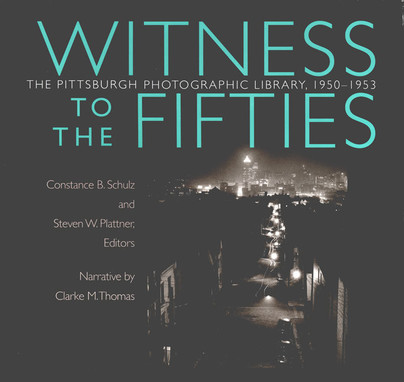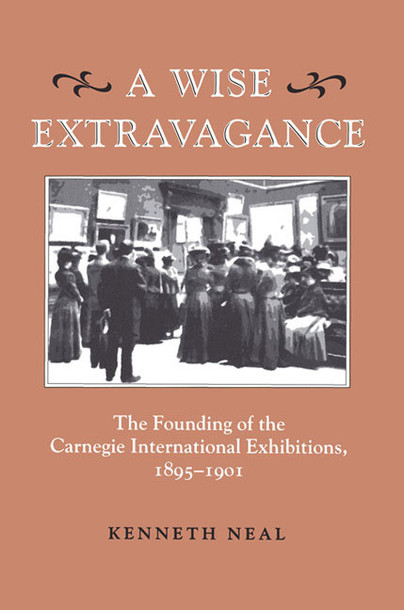Witness to the Fifties
The Pittsburgh Photographic Library, 1950–1953

Pages: 192
ISBN: 9780822941118
Pub Date: 07 Oct 1999
Pages: 192
ISBN: 9780822961406
Pub Date: 15 Nov 1999
Description:
Initially commissioned to record the progress of Pittsburgh’s Renaissance I, these unforgettable black-and-white photographs of Roy Stryker's Pittsburgh Photographic Library (PPL) capture the city in a state of flux. They reveal a union of opposites—the suited wonderment of the downtown businessman with the easy grace and competence of a shirtless construction worker balanced high over his head; the anonymity and isolation of planned housing with the belief in expansion and renewal; the energy and excitement of a city on the move with the traditions of the established elite; the juxtaposition between the growing optimism about the ability of technology to improve our lives; and the traditional steel and other heavy smokestack industries that still dominated the region. The Renaissance was seen as a way for Pittsburgh to keep abreast of modern urban life and to preserve its economic position, but the rapid development of a white suburban middle class was sapping the very essence of the personalized downtown neighborhoods.
These photographers have captured the convergence of destruction and rejuvenation that is the essence of an urban renaissance—all the anxiety and hope of the decade is reflected in these poignant photographs.Constance Schulz's fascinating essay on the story of the PPL, in order to present a full picture of the political and civic goals, achievements, and failings of the project, provides a thorough discussion of the background of the Pittsburgh Photographic Library, putting into perspective the Allegheny Conference's purpose for initiating the PPL, Roy Stryker's own vision and work, as well as those of the photographers who worked for Stryker on the project, and the politics that undermined the full implementation of it. Clark M. Thomas's accompanying narrative offers an eclectic range of facts and fascinating bits of the city's history and neighborhood lore, as well as noting important political and economic episodes. It also provides a glimpse into the often underrepresented lives of minorities and women in the region's development. Anyone moved by the incredible social upheaval and expansion that occurred in cities across the nation in the 1950s following years of depression and war will want to have this collection.

Format: Paperback
Pages: 288
ISBN: 9780822955849
Pub Date: 15 May 1996
Description:
Andrew Carnegie, industrialist and a major American philanthropist, sought to bring world-class art and culture to Pittsburgh. This book looks at how the Carnegie International exhibit came into being in 1895, the early exhibitions, the art, artists, and the public reception to it.
Vision and the Visual Arts in Galdos
A Study of the Novels and Newspaper Articles
Format: Hardback
Pages: 242
ISBN: 9780905205304
Pub Date: 01 Dec 1986
Imprint: Francis Cairns Publications
Illustrations: x + 242 pages.
Description:
Throughout his life the major Spanish novelist Benito Perez Galdós (1843-1920) took a keen interest in the visual arts. Parts I and II of this book discuss Galdós's art journalism and his artistic contributions to the illustrated edition of the historical novels. But the main focus (part III) is on references to the visual arts and pictorial landscapes, particularly in the serie contemporánea, the contemporary social novels.
Such allusions often act as a guide to interpretation; they also relate to the whole philosophical question of how the eye perceives physical reality. Professor Bly offers a fascinating analysis of the various types of interrelationship between visual art and novelistic action; his study contributes greatly to the understanding of aesthetic and moral perception in Galdós's novels, and contains wider implications for nineteenth-century literary and aesthetic theory.


